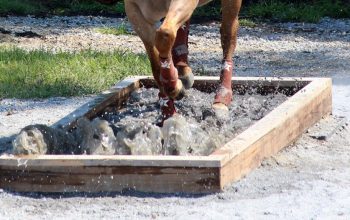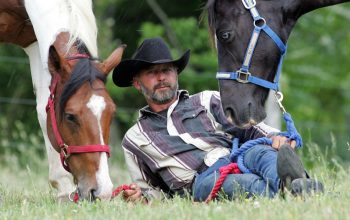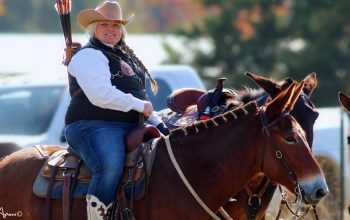By Shari Parys, NATRC
How do you get started in NATRC? If you are new to long distance riding, start with what you have. My family began in our Western and English saddles in whichever our horses and we were most comfortable. Over the years, we gradually replaced items as we found different tack that worked better for our competitive trail riding (CTR) needs.
This sport is very friendly and non-judgmental, so do not feel like you need the latest and greatest. We are much more interested in how you care for your horse and handle the miles than if you are color-coordinated! A Ziploc bag can hold your map, and a dustpan can scoop water to cool your horse or used to fan him. You do not need a long shopping list of new gear to enjoy our sport.
When preparing for your first CTR, we believe in LSD. No … we are not drug advocates, but rather know the importance of Long Slow Distance while laying the foundation for our horses’ fitness. Gradually add speed or distance to your conditioning rides, but not both at the same time.
A general rule of thumb is to slowly increase your mileage until you are doing per week the amount of miles you will do in one day of competition, so, for example, up to 24 miles for Novice division. It is not as daunting as it may sound as you can pick up several miles at home over a few weeknights and then do a longer ride or two over the weekend.
I work up to 60 hours per week, yet still have time to condition. The key is to make each ride count and have goals to work toward. Sometimes this means foregoing a slow ride chatting with buddies to moving out more on your own. I have been lucky to find like-minded friends who enjoy conditioning also!
Brrrr… One can feel the chill at daybreak as Shari Parys and Mika ride out from camp. Photo credit: Andy Klamm, Hutchinson, Kansas
While out training, add in a few minutes of obstacle practice so your horse begins to expect it as part of his trail riding ventures and you are never honing too much on a maneuver. As you ride, look for a nice log to sidepass, find two trees at a proper distance to back between or around, stop your horse half way down a hill and back up a few steps, change gaits at predetermined points, and walk or trot over logs in the trail. By working at such things a bit at a time, you will see great progress but also keep your horse’s mind fresh. I try to keep it light and fun for my horse, wanting him to enjoy the whole experience as much as I do.
Because we ride many miles at a time, your horse will need to keep good gut motility. Allow him time to graze and let him know it is okay to grab bites, as long as it is your idea and he is not snatching the reins away.
Green grass has vital electrolytes and water content. Offer your horse water at every occasion while out training so he soon learns that every puddle, creek, lake, or tank is an opportunity to drink.
Since our veterinary checks involve in-hand work, and we expect good manners for safety and proper evaluation, work with your horse at home. Make sure your horse can trot or gait in hand well on a straight line and in circles in both directions. Many lunge their horses to free up their movement and show them off better. Practice whichever way you and your horse are comfortable.
The veterinarian will be checking your horse’s back, neck, girth area, legs, and mouth, so have a stranger touch your horse, pick up his feet, lift his lip and touch him all over.
At pulse & respiration checks along the trail, your horse will be expected to stand quietly in line between other horses while volunteers move around them, so work on cues to stand still and settle.
The most important thing? Relax and have fun. Even the most experienced competitors make mistakes or have embarrassing moments! Do not expect perfection but rather a chance to learn or to have a good story to tell around the campfire.
 Learn more about the North American Trail Ride Conference (NATRC) by visiting www.natrc.org
Learn more about the North American Trail Ride Conference (NATRC) by visiting www.natrc.org





